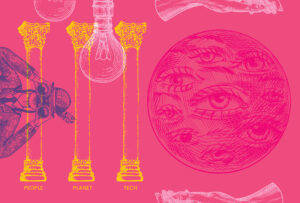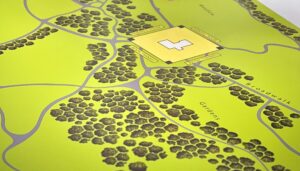Introduction
The universal right to food has evolved into a complex narrative, transcending its fundamental vision. Hunger, though often perceived at the individual level or a result of personal circumstances, is intricately an outcome of our current systemic inadequacies.
This research explores the multifaceted nature of hunger, challenging the conventional framing within the four pillars of food security (availability, access, utilization, and stability). Adding a crucial link with the proposed agency pillar, advocating for empowerment and decentralized solutions in food systems.
“Hunger affected about 735 million people in 2022, this means 122 million more people faced hunger in 2022 than in 2019” (FAO et al. 2023, xvii).
Food security must be a priority for everyone, with the acknowledgement that having control over the food system empowers action from various fronts. This report marks the initiation of connections between how hunger is measured, funded, and communicated, revealing unseen links that exacerbate systemic hunger. It highlights the transformative power residing in individuals and their collective role in reshaping the narrative around hunger.
Hunger is more complicated than empty bellies – interconnected issues of poverty, inequality, conflict, climate change, gender discrimination, weak government and health systems all play a role in driving hunger
Food Security definition
Research Question
How can we enhance understanding and empathy of key hunger-related concepts including food security/insecurity, by UN World Food Programme (WFP) donors, through the utilisation of visual aids and systems maps?
The goal was to construct a broader visual narrative and foster empathy among WFP donors in humanitarian food assistance, in order to strengthen conversations between relevant stakeholders and their coordination in programming and fundraising.
Food insecurity & power/decision balance
Presented here is small sample of some of the visualisations created over the course of this research study. These visualisations are the result of a critical and comparative review of literature and visualisations of food systems relating to food security, food insecturity and stakeholder ecosystems. Primary research included interviews and workshops with WFP stakeholders and incorporates their critical feedback.
Food system map
This journey of exploration and understanding revealed gaps in our knowledge, prompting a realization of the need to become better designers and communicators. Designing with justice and communicating with empathy, visualizing marginalized communities, fostering a broader understanding of hunger, and advocating for systemic visibility emerge as critical steps in this ongoing fight against hunger.
Key pillars driving hunger.
Conclusion and Next Steps
Food is a fundamental right that must be respected. The research, starting with a simple question about hunger, evolved into a larger exploration of interconnected systems and problems related to food security as a complex wicked problem.
Further focused research is vital to comprehend the intricacies of how we visualize global food systems, particularly the complexities surrounding systemic hunger. The communication of technical data about hunger requires a deeper level of empathy. We need to understand the human stories behind the statistics while crafting visuals that resonate with the audience but include technical data as well. This empathy-driven approach ensures that the real impact of hunger is felt and understood from different scales, transcending mere numbers, and fostering a more compassionate response.





